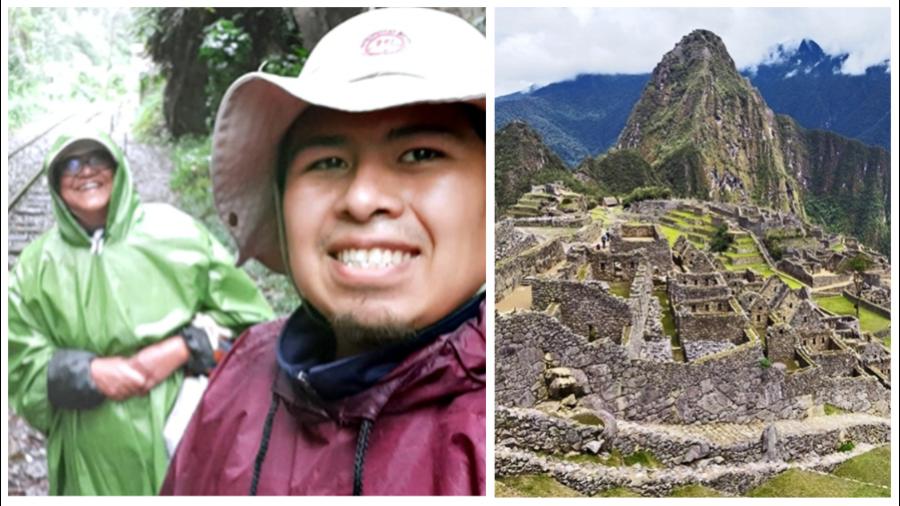Attending a wetlands conservation conference at Lake Titicaca at Puno in Peru, Ajanta Dey of Nature Environment and Wildlife Society (NEWS) found herself trekking through Andean-Amazonian forests to escape the Emergency declared in the country in the wake of an attempted coup by President Pedro Castillo on December 7 and catch the first flight out.
The 16th Living Lakes International Conference was held in the city of Puno (Perú) from December 6 to 8, hosted by the Binational Autonomous Authority of Lake Titicaca (Peru-Bolivia). Dey was in Puno from December 4 to attend the conference. On December 7, Castillo tried to dissolve a hostile Congress that was labelled a coup. The Peruvian Armed Forces refused to support Castillo who was impeached.
Vice-president Dina Boluarte was sworn in as the new president. Following Castillo’s removal, his supporters started nationwide protests. The Boluarte government announced a national state of emergency on 14 December, for 30 days.
On December 7, the Living Lakes conference attendees went on a field trip to Lake Titicaca and were visiting a floating island of the Uros community when they first heard of the attempted coup.
By the evening there were reports of unrest and on the morning of December 8, the first woman President of Peru Dina Boluarte had taken over. “We were discussing amongst ourselves that we had unwittingly become witnesses to the history of a woman taking over leadership in a Latin American country,” said Dey over the phone, sounding excited and tired at the same time as she reached home finally on December 21 morning.
On December 9, the conference ended. “I had planned a tour of the Unesco heritage site Machu Picchu and proceeded according to my itinerary,” said Dey.
She reached Cusco on her way to Machu Pichhu. “I came to know that there was trouble at Urubamba, a city and the main bridge in the town had been barricaded with burning tyres. I thought to myself how similar were the modes of protests in countries far apart. I took another route to Machu Pichhu,” said Dey.
She travelled via Moray, through beautiful Andean landscapes and then on to Ollantaytambo, from where she took a train to Machu Picchu village. “Once I reached Ollantaytambo, I saw that trains of Peru Rail, and Inca Rail were on schedule and life looked normal. From there, I took the train to Machu Picchu village with just one piece of luggage,” said Dey who later found herself stranded at the Unesco World Heritage site for five days owing to the unrest.
Early on December 13, Dey took the bus to the climbing point of Machu Picchu. “I spent four hours at the site taking in the breathless beauty of the ancient Inca civilisation. By afternoon I was through and my English guide advised me to leave as he said the situation in the country was not good. As I came down to the station, I came to know all trains had stopped. A nationwide strike had been called by the outgoing President Castillo,” said Dey.
More disturbing news poured in. The three airports at Cusco, Juliaca airport and Arequipa airport had been closed following vandalism. “From December 13-16, I was stuck at Machu Picchu, unable to move out,” said Dey, who by now was perturbed.
“On December 14, an Emergency was declared for 30 days. It was then that I started calling the Indian embassy. Flights started operating from Cusco airport on December 16 afternoon. I had to reach Cusco somehow and take a flight from there to Lima to fly out of the country,” said Dey.
The embassy called Dey to inform her that evacuation plans for tourists would start from Machu Picchu but priority would be given to the elderly, sick and children.
“I walked over two and a half hours to Hidroelectrica, and then reach Cusco in 6-7 hours by car through a landslide-prone zone of the Andean-Amazonian forest. And for my perilous journey, I had a local English-speaking guide Sandro who was my guardian angel,” said Dey.
On December 17, Sandro keeping the Inca statue as testimony with the Machu Picchu village and the village church as a witness, wished Dey a happy 56th birthday at 4.30 in the morning before taking her out on the perilous journey.
“I will never forget this birthday. I thanked Sandro who literally saved my life guiding me through the slippery rail tracks, the waterfalls, the rickety wooden bridges, over pebbles and stones en route Hidroelectrica,” said Dey.
From Hydrelectica, Ajanta took a car to Cusco. “I managed to reach Cusco in the afternoon of December 17 avoiding the 8 pm curfew,” said Dey, who took the next day 3 pm flight to Lima and then the Lima-Miami-Dubai-Kolkata flight out at midnight. Back at her Kankurgachhi home in northeast Kolkata, Dey fresh out of an adventure is readying herself for her next even as she relives her days at the Inca citadel.
